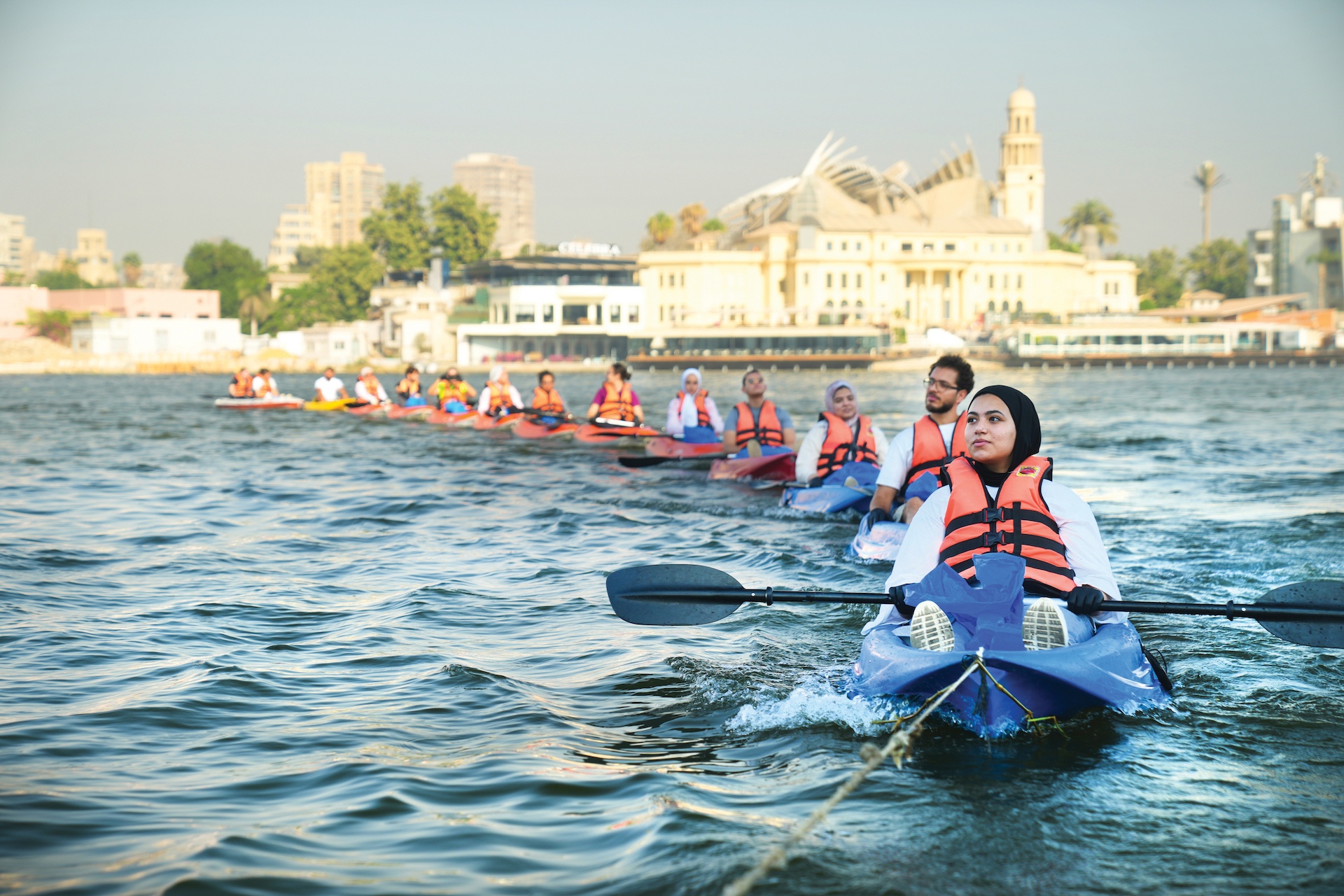"When we cleaned the Nile ourselves, we felt the importance of the problem as though we were the people suffering from it," reflected Taysseer Elrefaie, an architecture senior who kayaked around the Nile River in Cairo with fellow classmates last winter, pulling out plastic trash.
The trip was part of AUC's Urban Design Studio course, taught by Momen El-Husseiny, assistant professor of architecture and urban design, and adjunct faculty Abeer Elshater, where -- through a blend of architecture and a culturally sensitive, human-centered approach -- students empowered the local community of fishermen and farmers on Qursaya Island, to be self-sufficient, resilient and, more importantly, sustainable.
From the depletion of fish to the rise in plastic waste and groundwater levels on the Nile, students were exposed to the challenges faced by the marginalized communities on the island, which lies at the center of the Nile River. With boats as the only means of transportation to and from the island, residents don't have easy access to basic services. And this is where the student work came in -- coming up with urban design masterplans that would not only help the local island community but also create eco-friendly building models for Cairo as a whole.
"The students used their creativity to generate a space-program that meets community needs while developing new public areas that Cairo significantly lacks," said El-Husseiny. "Our aim was to promote inclusivity and diversity, and the students did that in innovative ways based on field research and urban sports, as well as community focus groups and interviews. After critically examining urban design theories of the Global North and revisiting our own practices in the Global South, the students created masterplans that question the very notion of the 'master' since they involved active participation by the island's residents and other community stakeholders, from farmers to women to fishermen."
"Our ability to propose convincing solutions relied heavily on our engagement with the community."
Among the designs proposed by the students were a corniche along the Nile with new ports and emergency access points, clinics to address the lack of healthcare infrastructure, a market area for recycling and upcycled goods, a scientific laboratory for microplastics and Nile-marine ecology, aquaponics with vertical farming, wetlands for migrating birds along the Nile, food outlets, restaurants and separate qahwas (traditional cafes) for men and women that would serve as a social hub for building community connections. The students also recommended introducing new measures for residents to adopt a more sustainable way of living, including organic farming, solar panels, bicycle paths and electric boats.
"These ideas emerged in response to the pressing challenges faced by the community, including water pollution, energy shortages and difficulties in accessing food and goods," said Shehab Elbokl, architecture senior. "We also observed the excessive plastic waste in the Nile, which we aimed to transform into useful products to enhance the island's environment. Our ability to propose convincing solutions relied heavily on our engagement with the community."

In order to truly understand community needs, students embraced an ethnographic approach that included firsthand research, day and night analysis, and sipping tea with local residents.
"These informal interactions were as important as the formal design work produced by students because they provided an insider's perspective on the lives of the people for whom the designs are meant to serve," said El-Husseiny.
Empathy was at the core of the student experience. "The concept of 'designing for the people' quickly became the heart of my approach as I worked on the masterplan for Qursaya Island, but it didn't stop there. I realized that designing with the people was the key," said Gloria Hanna, architecture senior.
The students also collected plastic waste on the Nile, kayaking with the community organization VeryNile and local fishermen, who have resorted to recycling as a source of income with the decline of fish populations over the years.
At the end of the course, the students presented their masterplans to a local jury and community residents. "They had great ideas. Hopefully, we will see these projects live," said Kareema Ahmed, a local resident of the island.
For the students, the impact is long-lasting. "This course truly changed me," affirmed Hanna.
-By Dalia Al Nimr
Photos by Rawan Ezzat


